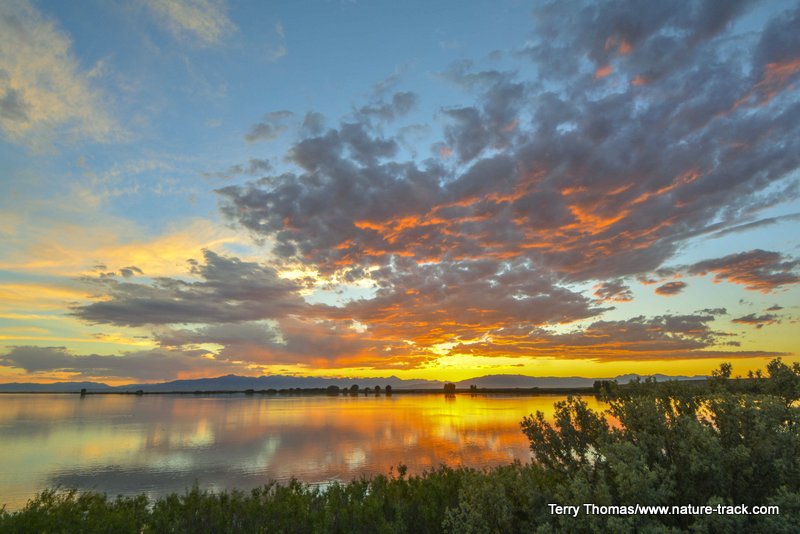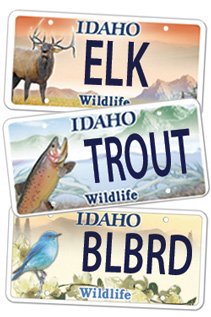The Atmosphere

In the troposphere, water vapor is a major component and is responsible for the weather we experience.
There is probably nothing that humans take for granted more than the air that we breathe. As essential as it is for life, for the most part, I never give it a second thought until something unpleasant happens—a tornado, intense pollution, or getting the wind knocked out of me. Then I have a momentary appreciation and quickly forget.
However, the term, air, refers to a complex of gases and particulates in what we call the atmosphere, a relatively narrow cushion (think forcefield like in Star Wars or Star Trek) that encircles the Earth and grants life here. Within the atmospheric air, the particular gas we are interested in is oxygen, 0₂. However, air is comprised mostly of nitrogen (about 78 percent with oxygen comprising 21 percent). Argon, carbon dioxide, helium, neon, and other gases all make up the remaining one percent. Water vapor and particulates such as dust are also part of the atmosphere.
Although all the planets in our solar system have their own atmospheres, Earth’s atmosphere is more complex and contains that critical ingredient for life, oxygen.
This thing we call atmosphere lays over us like a blanket. In fact, it has been compared to living at the bottom of an invisible ocean 34 feet deep. That should feel like a lot of weight on us (a cubic foot of water weighs 62.41 pounds, so that should feel like over a ton of water pressing down on every square foot). Yet, it is so spread out that we just don’t notice it, something like we don’t feel the spinning of the Earth.
This total atmosphere is layered like a cake, extending up to hundreds and even thousands of miles above the Earth, depending upon conditions. The layers are the troposphere, the stratosphere, the mesosphere, the ionosphere, the thermosphere, and the exosphere where the atmosphere blends into outer space.
We live in the troposphere, or the lowest atmospheric layer. This layer is about six miles thick, thinner at the poles and up to ten miles deep at the Equator. In addition, the troposphere is also thinner in winter than it is in summer. Nearly all the water vapor in the atmosphere is found in the troposphere so we are going to be most interested in that layer because it is where almost all our weather is formed.
As we go up in altitude or elevation, the air becomes thinner or contains fewer molecules. It gets thin enough that helicopter technology did not advance sufficiently to allow one to land on the summit of Mount Everest until 2005. It also gets colder with altitude. At the top of the troposphere, it is -60 degrees Fahrenheit.
The troposphere serves one other purpose. Imagine the Earth sitting inside a clear plastic bag. Heat from the sun readily penetrates and is trapped, keeping the planet warmer. This plastic bag is made up of gases such as carbon dioxide, methane, ozone, nitrous oxide, chlorofluorocarbons, and water vapor, collectively called greenhouse gases, and traps heat near the surface. This “greenhouse effect” maintains a relatively stable average temperature on the planet of 59 degrees Fahrenheit.
Carbon dioxide, CO₂, is crucial in maintaining stability in the troposphere, and reducing wild temperature swings. It seems that CO₂ gets a bad reputation though because of pollution concerns. The bottom line of this is that the troposphere is a pretty finely balanced composition. Changes to the composition can spell trouble, but because of the vast expanse, may take a long time to notice or begin to take effect. Over the past 150 years, carbon dioxide in the atmosphere has been steadily increasing, and this is finally catching up in the form of increasing global temperatures.
While the troposphere is the atmospheric layer we notice the most because of its direct impacts upon us, each of the other layers influences our planet and our lives as well. More on that next time.
Wildlife License Plates
Great news! as of 2024, there are three NEW designs for license plates. They still are bluebird, cutthroat trout and elk, but they are beautiful.
Idaho Wildlife license plates provide essential funding that benefits the great diversity of native plants and wildlife that are not hunted, fished or trapped—over 10,000 species or 98% of Idaho’s species diversity. Game species that share the same habitats (such as elk, deer, antelope, sage-grouse, salmon, trout) also benefit from these specialty plates.
No state tax dollars are provided for wildlife diversity, conservation education and recreation programs. Neither are any revenues from the sale of hunting or fishing licenses spent on nongame species. Instead, these species depend on direct donations, federal grants, fundraising initiatives—and the Idaho Wildlife license plates.
Both my vehicles have Bluebird Plates. I prefer the bluebird because the nongame program gets 70 percent of the money from bluebird plates, but only 60 percent of the money from elk and trout plates - 10 percent of the money from elk plates supports wildlife disease monitoring and testing programs (to benefit the livestock industry) and 10 percent from cutthroat plates supports non-motorized boat access.
Incidentally, in 2014, the Idaho Legislature denied the Department of Fish and Game the ability to add new plates or even to change the name of the elk and cutthroat plates (very specific) to wildlife and fish plates, a move that would have allowed for changing images occasionally and generating more revenue. It would seem that they believe that we Idahoans don't want a well funded wildlife program.
I think it is time we let the Legislature know that Idahoan support wildlife funding and that we would like to see these generic plates come to fruition.
Help Idaho Wildlife
When we traveled across the state in October 2017, we visited most of the Idaho Department of Fish and Game wildlife management areas. Most of the vehicles we saw using the wildlife management areas did not have wildlife plates. Buying wildlife plates is a great way for non-hunters and hunters alike to support wildlife-based recreation like birding.
C'mon folks, let's help Idaho's wildlife by proudly buying and displaying a wildlife license plate on each of our vehicles!
See below for information on Idaho plates. Most states have wildlife plates so if you live outside Idaho, check with your state's wildlife department or vehicle licensing division for availability of state wildlife plates where you live.
And tell them that you heard about it from Nature-track.com!

Wildlife License Plates
Great news! as of 2024, there are three NEW designs for license plates. They still are bluebird, cutthroat trout and elk, but they are beautiful.
Idaho Wildlife license plates provide essential funding that benefits the great diversity of native plants and wildlife that are not hunted, fished or trapped—over 10,000 species or 98% of Idaho’s species diversity. Game species that share the same habitats (such as elk, deer, antelope, sage-grouse, salmon, trout) also benefit from these specialty plates.
No state tax dollars are provided for wildlife diversity, conservation education and recreation programs. Neither are any revenues from the sale of hunting or fishing licenses spent on nongame species. Instead, these species depend on direct donations, federal grants, fundraising initiatives—and the Idaho Wildlife license plates.
Both my vehicles have Bluebird Plates. I prefer the bluebird because the nongame program gets 70 percent of the money from bluebird plates, but only 60 percent of the money from elk and trout plates - 10 percent of the money from elk plates supports wildlife disease monitoring and testing programs (to benefit the livestock industry) and 10 percent from cutthroat plates supports non-motorized boat access.
Incidentally, in 2014, the Idaho Legislature denied the Department of Fish and Game the ability to add new plates or even to change the name of the elk and cutthroat plates (very specific) to wildlife and fish plates, a move that would have allowed for changing images occasionally and generating more revenue. It would seem that they believe that we Idahoans don't want a well funded wildlife program.
I think it is time we let the Legislature know that Idahoan support wildlife funding and that we would like to see these generic plates come to fruition.

"WOW. What a phenomenal piece you wrote. You are amazing." Jennifer Jackson
That is embarrassing, but actually a fairly typical response to my nature essays. Since The Best of Nature is created from the very best of 16 years of these nature essays published weekly in the Idaho Falls Post Register (online readership 70,000), it is a fine read. It covers a wide variety of topics including humorous glimpses of nature, philosophy, natural history, and conservation. Readers praise the style, breadth of subject matter and my ability to communicate complex and emotional topics in a relaxed and understandable manner.
Everyone can find something to love in this book. From teenagers to octogenarians, from the coffee shop to the school room, these nature essays are widely read and enjoyed.
Some of the essays here are my personal favorites, others seemed to strike a chord with readers. Most have an important message or lesson that will resonate with you. They are written with a goal to simultaneously entertain and educate about the wonderful workings of nature. Some will make you laugh out loud and others will bring a tear to the eye and warm your heart.
Readers Write:
"You hit a home run with your article on, Big Questions in Nature. It should be required reading for everyone who has lost touch with nature...great job!" Joe Chapman
"We enjoyed your column, Bloom Where Planted. Some of the best writing yet. The Post Register is fortunate to have your weekly columns." Lou Griffin.
To read more and to order a copy, click here or get the Kindle version
Copies are also available at:
Post Register
Island Park Builders Supply (upstairs)
Barnes and Noble in Idaho Falls
Harriman State Park, Island Park
Museum of Idaho
Valley Books, Jackson Wyoming
Avocet Corner Bookstore, Bear River National Wildlife Refuge, Brigham City, Utah
Craters of the Moon National Monument Bookstore, Arco, Idaho